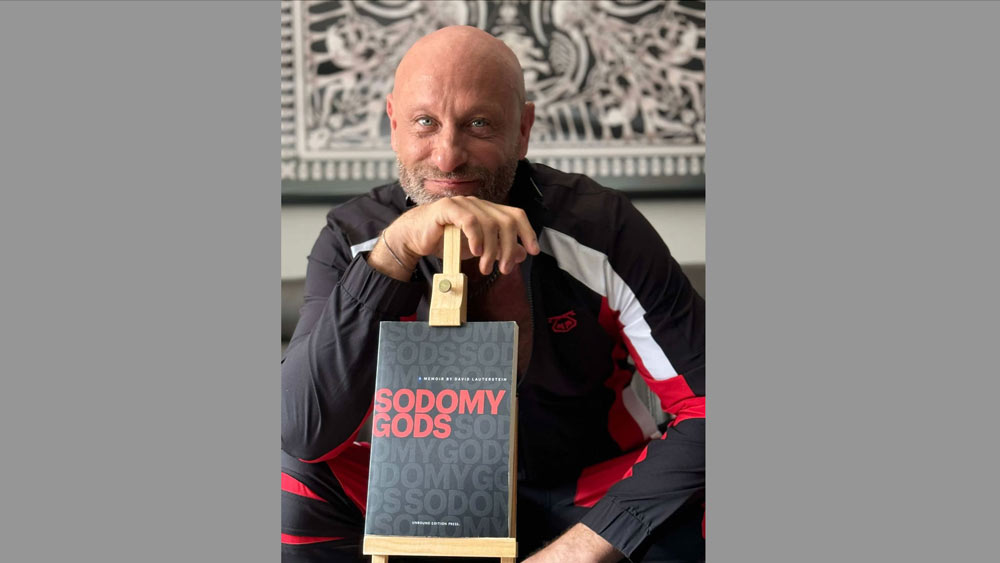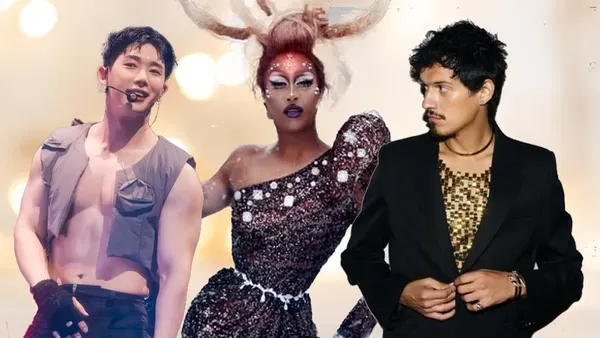
Sep 19
Legacy and Longevity: Nasty Pig Founder Tells Stories in Queer Fashion
Kilian Melloy READ TIME: 3 MIN.
David Lauterstein has a new memoir out.
With "Sodomy Gods" – a book that's both historical document and repository of steamy anecdotes – Lauterstein wants to transmit the kind of lore "our ancestors couldn't pass down to us because we lost a lot of them" during the AIDS epidemic, The New York Times relayed. But he's also, he suggested, been telling tales for decades through his Nasty Pig clothing line.
"Sodomy Gods" is Lauterstein's "[r]aw, provocative, and unflinchingly honest... coming-of-age story," according to the Nasty Pig site.
"From coming out amidst the devastation of the AIDS crisis, to falling in love and launching the iconic queer fashion brand Nasty Pig, David's journey is one of self-discovery, resilience, and the revolutionary power of queer identity and community," a blurb for the book reads. "His path takes readers across various subcultures, through moments of activist rage, and into today's White House."
As for that other, less literary means of self-expression he's long practiced, Lauterstein summarized what he said was a life lesson from friend and French clothing designer Manfred Theirry: "Make clothing for your customers. The story is between you and them."
That sartorial story has deep roots in the queer community.
Lauterstein's longtime husband, Nasty Pig Creative Director Frederick Kearney, "said his inspirations include the gay artist Tom of Finland – whose vision of distended denim and straining tank tops refined an archetype of the hypermasculine clone – and the photographers Alvin Baltrop and Stanley Stellar, who captured New York's gay pier scene of the 1970s and '80s," the Times said.
From those influences the brand has distilled "an aspirational vision of what being gay can look like," the Times noted, adding that their stylistic aesthetic is one that arrives today "through the gay leather scene and men's physique magazines of the 1950s..."
So distinctive is the line, the Times posited, that "Nasty Pig's logo – an abstract snout, designed by the artist Ryan Duty, who died in 2020 – is one of the last purely queer identifiers."
"Sodomy Gods" is as much about the lifelong romantic partnership between Lauterstein and Kearney as their shared entrepreneurial venture. A couple since 1993, the two found their calling when they "started designing and wearing their own apparel on nights out," the Times documented.
"That eventually became the line they sold under the Nasty Pig brand – named for their Jack Russell terrier, Piggy – at their first store, which opened on Dec. 23, 1994, in a 64-square-foot Chelsea storefront."
Since then, with its physique-flattering cuts, reinvention of erotically charged athletic apparel, and nods to fetish wear, the brand has come to define a certain "gay" look that everyday customers and celebrities like out gay singer Frank Ocean alike have taken to.
For some in the younger queer set – and younger queer people are legion; Gen Z is the most openly LGBTQ+ American generation ever – Nasty Pig cuts too narrow a stylistic silhouette, speaking too specifically to a gay male aesthetic, the Times noted.
But that's not something Lauterstein seemed to regret in his comments to the newspaper. "Is our clothing identified as masculine? Sure," he acknowledged. "But it's non-toxic. It's celebratory."
Have a look at some of that celebratory spirit in some of the photos that the label shares on its Instagram account.
Kilian Melloy serves as EDGE Media Network's Associate Arts Editor and Staff Contributor. His professional memberships include the National Lesbian & Gay Journalists Association, the Boston Online Film Critics Association, The Gay and Lesbian Entertainment Critics Association, and the Boston Theater Critics Association's Elliot Norton Awards Committee.







